The Association for Mormon Letters Awards were presented at the Berkeley LDS Institute, March 30, 2019. Below is each award winner, along with the award citation, written by the judges.
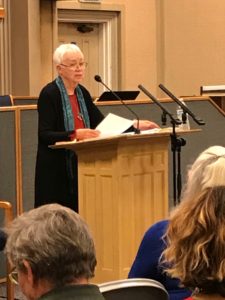
 Carol Lynn Pearson was presented with the Association for Mormon Letters Lifetime Achievement Award.
Carol Lynn Pearson was presented with the Association for Mormon Letters Lifetime Achievement Award.
Melissa Leilani Larson was presented with the Smith-Pettit Foundation Award for Outstanding Contribution to Mormon Letters.
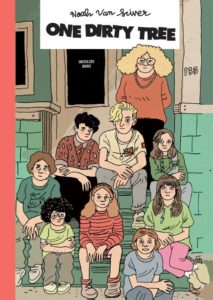 Comics
Comics
Noah Van Sciver, One Dirty Tree. Uncivilized Books.
Noah Van Sciver’s One Dirty Tree is a powerfully haunting non-fiction novella. Its title refers to the dilapidated New Jersey home the author and his large family shared briefly during his childhood. While their stay was short, the house maintains metaphoric significance, revealing how Van Sciver’s childhood still impacts his adult life. The narrative moves between 1994, with Van Sciver exploring his family’s collapsing dynamics, and 2014, as he ends a doomed romantic relationship. The alignment of these plotlines promotes introspection through their echoing emotions. In 1994, he explores how Mormonism, mental illness, comics, neglect, and poverty shape his childhood, through moments that touch each other but never snap into perfect focus—clearly remembered bits revealing the overall shape of a childhood. While in 2014, Van Sciver considers the struggles of an emerging artist through vignettes of himself as the “American Cartoonist” as he battles with his girlfriend and tries to navigate the perception his past creates in others’ understanding of him. He intertwines these explorations through central themes like unfulfilled dreams, loneliness, and childhood trauma. Drawn in his recognizable line, with incursions of his mother’s art or famous images from pop culture and fine art, Van Sciver’s visuals expand the narrative. Together, they resonate and provide a fresh look at the travails of growing up in chaos, poor and uncertain. The book ends, however, with Van Sciver standing beyond both 1994 and 2014, once again outside One Dirty Tree, and considering what meaning these justaposed storylines might hold for him—or for those of us listening in—today.
Other finalists:
Brandon Dayton, Green Monk: Blood of the Martyrs
Brittany Long Olsen, Comic Diaries, Vol. 1
Jake Parker, SkyHeart Book One: The Search for the Star Seed
Nick Perkins, Cooties #11
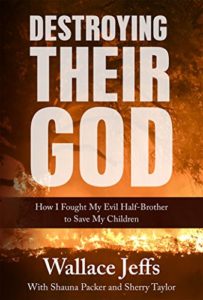 Creative Nonfiction
Creative Nonfiction
Destroying Their God: How I Fought My Evil Half-Brother to Save my Children, By Wallace Jeffs, with Shauna Packer and Sherry Taylor. Zarahemla Books.
The “god” in the title is not a deity, but rather the author’s half-brother Warren Jeffs, the disgraced and now imprisoned former leader of the polygamous FLDS sect that existed in certain enclaves in several Rocky Mountain states during the early years of this century. Even before Warren Jeffs’s arrest, erstwhile members of this and similar groups were coming forward with horrific tales of oppression and abuse of power—girls as young as 12 forced against their will to marry much-older men, adolescent males (later called “lost boys” in the outside world) expelled from the communities because they were competition for the older men who wanted all the girls, weird sexual rituals, etc.,—all in the name of “religion.” Wallace Jeffs, who grew up in this community, married two wives, and fathered 20 children, relates his nightmarish experiences in living under the hypocritical and corrupt leadership of Warren, who virtually set himself up as a god, demanded huge amounts of money from his faithful followers and kept them subservient while indulging himself in pornography, deviant sexuality, and a lavish lifestyle. Wallace’s convoluted and grueling trek out of this milieu is riveting and disturbing, told in a manner straightforward and poignant.
Other finalists:
Tara Westover, Educated: A Memoir
Keira Shae. How the Light Gets In
Criticism
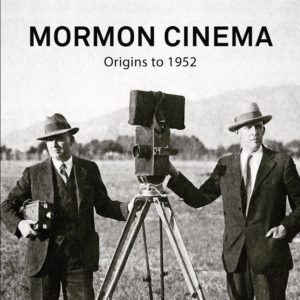
Randy Astle. Mormon Cinema: Origins to 1952. Mormon Arts Center.
Excellence in criticism requires in-depth and inclusive research, skillful interpretation of data and clear, readable writing. Randy Astle’s Mormon Cinema: Origins to 1952 is the culmination of decades of research, scholarly papers and published articles, now brought together and amplified in a single volume that captures the vast array of the LDS men and women who contributed to all facets of the creation of cinema, its early development as both an entertainment and art form, and its maturation into modern cinema. Astle also examines how Mormons were depicted in cinema, from the first wave that did little more than to show Mormons as scoundrels and villains, through the second wave of acceptance and respect, to the establishment of the first LDS film studio by Wetzel “Judge” Whitaker on the BYU Campus in 1952. Mormon Cinema is a joy to read. The insights into the personalities and contributions of those early LDS practitioners are remarkable. This is the untold story of Mormon cinema, a vast world we had only glimpsed before.
Other finalists:
Jacob Bender. “Low and hermeneutics of Silence.”
Ángel Chaparro-Sainz. “Isms and Prisms: A Mormon View on Writing about Nature and Women.”
Bert Fuller. “Mormon Poetry, 2012 to the Present.“
Darl Larsen. A Book about the Film Monty Python’s Life of Brian: All the References from Assyrians to Zeffirelli.
Drama
 Matthew Greene. Good Standing. Plan-B Theatre Company. Salt Lake City, October 2018, and New York City, November 2018.
Matthew Greene. Good Standing. Plan-B Theatre Company. Salt Lake City, October 2018, and New York City, November 2018.
Good Standing tells the story of a disciplinary council by the Church of Jesus Christ of Latter-day Saints for a member who chosen a same-sex marriage. A one man show, the script masterfully weaves through the different experiences and perspectives of the member and the 15 men sitting on the council.
With such a current hot button topic, it would have been easy for such a story to fall into the pitfalls of being either incredibly preachy or political. However, by giving dimension and depth to each of the characters, Greene effectively explores this very complicated situation from a multitude of angles. Readers/viewers easily find points of view that they agree with along with points of view that open their eyes to a new perspective. Perhaps the most appreciated part is that everyone in the script, no matter their viewpoint, is treated with compassion. Good Standing is a thoughtful work that encourages all who interact with it to literally stand in the shoes of their neighbor.
Other finalist:
Ariel Mitchell. The Shower Principle
Documentary Film
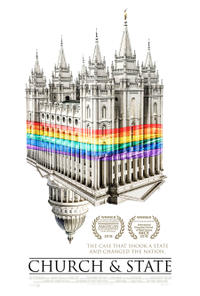 Church & State. Holly Tuckett and Kendall Wilcox, directors.
Church & State. Holly Tuckett and Kendall Wilcox, directors.
Kendall Wilcox and Holly Tuckett’s documentary, Church & State, simply and straightforwardly documents what may be the defining cultural moment of 21st century Mormonism thus far — the public debate over gay rights, and, in particular, over gay marriage in America.
Following the case that made its way through the Utah courts and resulted in an unexpected ruling briefly legalizing gay marriage in Utah, Church & State is detailed and direct, sympathetic, but unsentimental in its portrait of a specific time and place, of the lawyers and activists involved in advocating for LGBT rights, and of the legal process itself, detailing the act of putting together a case, writing briefs, preparing for trial, and so on. Kendall and Tuckett’s touch is light on emotional manipulation, preferring instead to focus on procedure and on presenting the much larger context of Mormonism’s influence within Utah’s state politics, which they do with an unusually deft hand, managing to be thorough and comprehensive in scope without ever getting lost in the weeds. As a result, Church & State is not only effective as a document of the unglamorous grunt work that goes into sweeping social change, it may also be the definitive film about Utah’s unique political landscape.
Just four years after gay marriage was legalized across the United States, Church & State already feels like a period piece. This is to its credit. Freed from the burdens of propagandizing for change, Wilcox and Tuckett’s documentary is able to do something much more interesting and much more valuable — it reminds us how things were just a few short years ago, the many ways in which they’ve changed, and, just as importantly, all the ways in which they haven’t. Church & State ventures into ideologically loaded territory and makes no attempts to apologize for its convictions. It’s a film that lets everyone have their say. It allows arguments to succeed or fail based on their own merits, never doubting the audience’s ability to follow along. It tells the truth.
In short, Church & State is not just about these ideals. It’s a film that lives up to them.
Other finalists:
Believer. Don Argott, director
The Insufferable Groo. Scott Christopherson, director
States of America. Brad Barber, director
Narrative Film
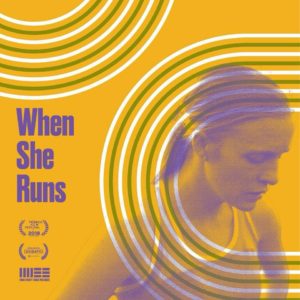 When She Runs. Robert Machoian and Rodrigo Ojeda-Beck, directors.
When She Runs. Robert Machoian and Rodrigo Ojeda-Beck, directors.
When She Runs opens with a single wide shot of a woman (co-writer and star Kirstin Anderson) running on a treadmill. No camera movement. No cut. No other action and nothing else in frame. Just a woman’s body in motion. Her deep, labored breathing. The real-life work of an athlete in training playing out before us on screen.
Is When She Runs a documentary? Not exactly. The scene is staged, but it captures real, physical effort and accomplishment that cannot be faked. The dramatic moments — including arguments between Anderson and her husband — are manufactured, but feel improvised, as awkwardly stiff and uncomfortable as life. More importantly, these moments, autobiographical or otherwise, are both predicated on and reflective of a real relationship (co-director Rodrigo Ojeda-Beck is Anderson’s husband on-screen as well as off) that exists far beyond the boundaries of the film or the frame.
The result is something like verite fiction, and the power of When She Runs comes not through typical sports movie theatrics (though the film does follow some of these basic genre beats if you squint very, very hard), but by turning its camera instead on all the “in between” moments (breakfast with the roommate, Anderson losing her spare key, and, of course, lots and lots of training) and allowing them to play out.
Co-directors Robert Machoian and Rodrigo Ojeda-Beck’s cinema is a cinema of accumulation, of building emotional significance and meaning through duration and repetition and process, and When She Runs is a training montage from another, more conventional Hollywood drama extricated and expanded into a story in its own right. It knows the work of an Olympic-level athlete is less in the competition itself than it is in the hours and days and weeks and months and years of training and discipline and strict dieting and coordinating schedules and all the accompanying pains and frustrations and successes that lead up to the big meet and endure long beyond it. It’s the encouraging hug when it all goes well. It’s the act of pushing oneself for its own sake, such that the climactic moment of the film manages to be both nail-bitingly suspenseful and entirely unspectacular.
There’s a sense of the divine in Machoian, Ojeda-Beck, and Anderson’s film, and it’s not in earthquakes or fires, but rather in its stillness and its smallness.
Other finalists:
Jane and Emma. Chantelle Squires, director
Long Haul. Bryan Fugal, director
Passenger Seat. Jeffrey Hein, director
Middle Grade Novel
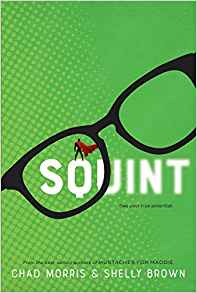 Chad Morris and Shelley Brown. Squint. Shadow Mountain.
Chad Morris and Shelley Brown. Squint. Shadow Mountain.
Squint, by Chad Morris and Shelly Brown, is the story of a young boy who is battling an eye disease that could eventually make him blind, all while trying to fit in at junior high, make new friends, draw the best comic book he can, and get along with his grandparents, whom he lives with. It is not easy for Flint, especially when he finds his comic book world much easier to be himself in than reality, but he faces each day with optimism and hopes to find a friend who he can share his true self with. After a remarkable surgery, Flint is able to see better than he has in years, and while it is a blessing he can see clearly again, that clarity brings some added trials that Flint has to overcome.
Written in prose, with Flint’s original comic book also featured, Squint is a heartwarming story that will touch your heart and stick with you for a while. Flint is such an endearing and lovable character that readers are rooting for him from page one and traveling with him on a very emotional journey as he navigates potential blindness, new friendships, bullies, disappointment, heartbreak, and hope. Morris and Brown have written a beautiful coming of age novel that will delight readers of all ages, and with its lovely blend of humor, heartache, and hope, it is a deserving book for this award.
Other finalists:
Cindy Baldwin. Where the Watermelons Grow
Julie Berry. Wishes & Wellingtons
Jennifer A. Nielsen. Resistance
Liesl Shurtliff. Grump: The (Fairly) True Tale of Snow White and the Seven Dwarves
Novel
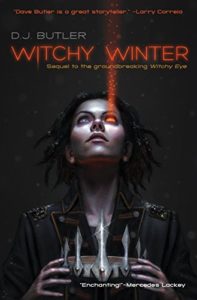 D. J. Butler. Witchy Winter. Baen.
D. J. Butler. Witchy Winter. Baen.
D. J. Butler’s Witchy War series is flintlock fantasy of the first order. Set in a sprawling alternate early America colonized by the Bantu, Igbo, and magical Firstborn as well as the French, Spanish, Dutch, and English, the series’ first two installments—Witchy Eye and Witchy Winter—follow story threads from Appalachia to New Orleans to Cahokia as the fate of a continent hangs in the balance. Butler deftly handles pacing, point of view, and dialogue in multiple languages as his characters navigate the cultures, belief systems, and entangled interests that make up their world.
In addition to being great literature, these books are great Mormon literature. Through the cultures of honor and obligation it portrayed and through its magic system, Witchy Eye allowed readers to engage with poorly understood aspects of the real world of early Mormonism such as seer stone use, Masonry, and the pervasive Biblicism of 19thcentury American culture. Witchy Winter deepens the exploration, inviting readers to meditate not only on the culture Mormonism emerged out of, but also on topics such as the ability of subtle shifts in religious narrative to create startling shifts in meaning, the role of initiation in transmitting the sacred, and the possibilities of the spiritual to both ground and transform us. Through his ambitious work in this novel, Butler has showed how deep engagement with Mormonism can enliven a fictional world—and how fiction can enrich a distinctly Mormon discourse.
The Association for Mormon Letters is pleased to honor D. J. Butler’s Witchy Winter with its 2018 Novel Award.
Other finalists:
Jennifer Quist, The Apocalypse of Morgan Turner
Tim Wirkus, The Infinite Future
Picture Book
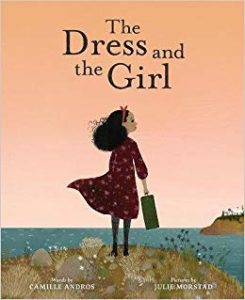 Camille Andros (words) and Julie Morstad (pictures). The Dress and the Girl. Abrams Books.
Camille Andros (words) and Julie Morstad (pictures). The Dress and the Girl. Abrams Books.
The Dress and the Girl is a delightful story that explores dreams, memories, and what constitutes an “extraordinary” experience in an “ordinary” world. The story begins when a mother makes a dress for her daughter. The girl loves life and loves the dress. Then one day the girl and her dress begin a journey to a new land; unfortunately, amongst all the hustle and bustle of getting to New York City the girl and the dress get separated. Life continues on and eventually there is a moment of sweet reunion and remembered dreams in this “extraordinary” story.
The text is poignant with just enough detail to get to know the story and a plentiful amount of ambiguity to allow readers to reflect on their own lost memories. The illustrations show the many details of life on a Greek island, travel to a distant harbor, and life in the new land—and yet the callbacks in the illustrations remind readers of the similarities and differences that happen to the dress and the girl over time. This is a beautiful example of how text and art can form an “extraordinary” story.
Other finalists:
Shauna Gibby and Casey Nelson. Jesus is Born: A Flashlight Discovery Book
Shannon Hale, Dean Hale, LeUyen Pham. The Princess in Black and the Science Fair Scare
Lori Mortensen and Matt Phelan. If Wendell Had a Walrus
Amy Newbold and Greg Newbold. If Da Vinci Painted a Dinosaur
Poetry
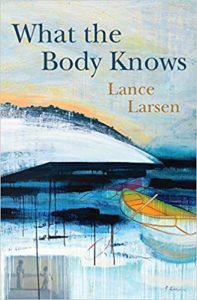 Lance Larsen. What the Body Knows. University of Tampa Press
Lance Larsen. What the Body Knows. University of Tampa Press
Larsen’s winning poetry collection, What The Body Knows, starts with a Ponge-esque poem about things in the act of sighing: an armchair; graves; broken crayons; expiring milk. Even the speaker sighs: “when will it end, sigh sigh sigh.” But this sense of sighing is just beginning. This opener gives us a taste of the longing and weariness that is to follow in the poems ahead. Desire is at the heart of this collection—a desire for the sensory, the physical world, the bodies in it. Larsen’s extraordinary gift for palpable language balances the bizarre with the banal, the light-hearted with the tragic. Under a veneer of odd references like King Kong, 7-Eleven, and Barbie legs, Larsen achieves a poetic urgency that goes beyond quirky for quirkiness sake. What The Body Knows does what few poetry collections do well, besides tackling the tragic, it unabashedly celebrates joy without sentimentality. The book ends with the unlikely image of a severed Barbie leg of which the speaker says: “I planted it beside the teeter-totter, in soft mud, toes up, so it could talk straight to the sky.” Who ends a book with a praying Barbie leg? And who successfully evokes hope and god and the resilience of the human spirit in the face of entropy with a plastic limb? Andy Warhol (a kindred spirit) argues: “Art is what you can get away with.” Larsen gets away with things many other writers couldn’t. What the Body Knowsis a book whose greediness for life in all its absurdity, tragedy, and sensuality, is contagious and moving and somehow original even in the 21st Century.
Other finalists:
Lara Candland. The Lapidary’s Nosegay
Javen Tanner. The God Mask
Kristen Tracy. Half-Hazard
Special Award in Publishing
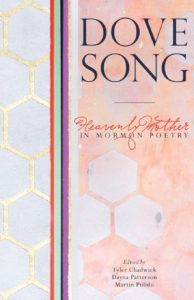 Tyler Chadwick, Dayna Patterson, Martin Pulido, editors. Dove Song: Heavenly Mother in Mormon Poetry. Peculiar Pages.
Tyler Chadwick, Dayna Patterson, Martin Pulido, editors. Dove Song: Heavenly Mother in Mormon Poetry. Peculiar Pages.
She is willful. She is in the other room. She is “the feminine / present subjunctive.” She is “tessellating.” She is “throneless, / wanders.” She is “queen of heaven.” She is a “Heavenly Hausfrau.” She is “Medusa in the kingdom.” She is the “Pillar of Womanhood.” She is “executrix.” She is a “mahogany” woman. She is “the Holy Soul.” She is.
These are among the things we learn about Mother in Heaven in Dove Song. It is glorious.
Edited by Tyler Chadwick, Dayna Patterson, and Martin Pulido, Dove Song is an anthology of almost two centuries of Mormon poetry about Mother in Heaven. A hefty tome at four hundred pages, it is not to be read in one sitting. Treasure it. We need this book, says Susan Elizabeth Howe in her introduction, for it is a “work of history” and a “sacred record” of not only Heavenly Mother’s existence but the “personal quest of the poets to learn about their Mother in Heaven”. Indeed, Dove Song gets it so right by foregrounding the historical significance of the “expansive state of contemporary Mormon poetry” that contemplates Heavenly Mother, in other words, to do for her what art works have done for over two thousand years in establishing, legitimizing, and authorizing the Christian God the Father and Jesus Christ. (By Gail Turley Houston, Dialogue, Fall 2018)
Religious Nonfiction
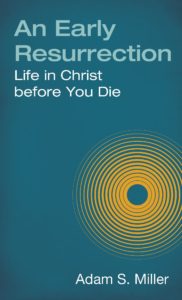 Adam S. Miller. An Early Resurrection: Life in Christ Before you Die. Maxwell Institute/Deseret Book
Adam S. Miller. An Early Resurrection: Life in Christ Before you Die. Maxwell Institute/Deseret Book
Adam Miller’s An Early Resurrection: Life in Christ Before You Die invites us to explore how Christ changes our relationship to time. The ingredients are familiar—personal stories, explications of scripture, etymological explanations, and so on—but the result is revelatory. Miller casts new light on basic Christian doctrine in a way that is accessible and beautiful. The near-poetic measuredness of Miller’s prose nudges the reader into re-reading and re-reading. Importantly in a book about time, the style slows us down without feeling like it is intentionally dragging. The thinking and feeling are so distilled that one intuitively reads slowly.
The “Religious Non-Fiction” category includes many types of literature. An Early Resurrection stands out for being very “religious” while also being “non-fiction”. It can be read as an account of spiritual devotion or as a work of theology or as both simultaneously. It also succeeds as a work of “letters.” In contrast to many books of comparable intellectual heft, An Early Resurrection expresses itself clearly and beautifully. At the risk of cliché, it is both virtuous and lovely, and merits recognition as an excellent work of religious non-fiction.
Other finalists:
Bruce C. Hafen and Marie K. Hafen. Faith Is Not Blind
Eric D. Huntsman, Lincoln H. Blumell and Tyler J. Griffin, editors. Thou Art the Christ, the Son of the Living God: The Person and Work of Jesus in the New Testament
Jonathan Stapley. The Power of Godliness: Mormon Liturgy and Cosmology
Laura Rutter Strickling. On Fire in Baltimore: Black Mormon Women and Conversion in a Raging City
Short Fiction
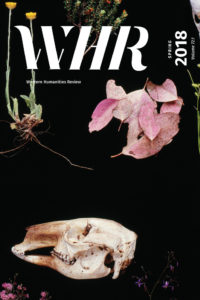 Alison Maeser Brimley. “Thin Walls“. Western Humanities Review. 72.1, Spring 2018.
Alison Maeser Brimley. “Thin Walls“. Western Humanities Review. 72.1, Spring 2018.
“Thin Walls” is a meditation in what might have been—a disintegration loop of love and loss. Brimley deftly feints to allow the reader to inhabit small rooms within the story, tight spaces where motivations are questioned in each relationship as time turns back on itself. The thin walls of memory and the brain are tested here, pressed up against, and ultimately ripped open so we can conclude this exercise in empathy at a small café in Italy, hopeful, with a metal clip standing in the way of loss. The beauty of Brimley’s story comes from her formally questioning the equations we use to solve for love, to solve for life, to solve for loss. Brimley, a linguistic mathematician, deserves recognition for this sharp narrative.
Other finalists:
Amy Henrie Gillett, “All Light and Darkness”
Ryan McIlvain, “Tower“
Ryan Shoemaker. “Light Departure”
Short Fiction Collection
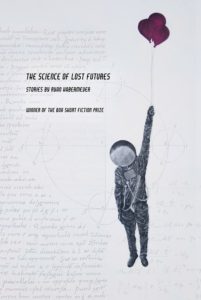 Ryan Habermeyer, The Science of Lost Futures. BOA Editions, Ltd.
Ryan Habermeyer, The Science of Lost Futures. BOA Editions, Ltd.
It’s no coincidence other critics have called Habermeyer’s work, “consistently funny, lovely, and moving.” His short stories range from the “indulgent” lifestyle of a factory worker who must stand naked to test Baby Breathe dolls, to a man purchasing a dozen turkeys to help his wife forget about her miscarriage. The outlandish premises give way to intricate emotional physics. A good example of this comes from the parents in the story, “In Search of Fortunes Not Yet Lost,” who lose their little girl to a salt well. The father drops over nine thousand buckets of water into the well so her body will rise, and the mother sets her energy to splitting wood. Both are afraid to say the wrong thing, to say the right thing, to cut through the grief. However, both are also aware of something the father once told his little girl—something Habermeyer showcases in this revealing collection of short stories: “Words are little sparks that can create large fires.”
Other finalists:
Heidi Naylor, Revolver
Ryan Shoemaker, Beyond the Lights
Young Adult Novel
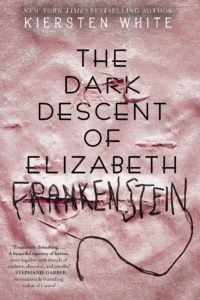 Kiersten White. The Dark Descent of Elizabeth Frankenstein. Delacorte.
Kiersten White. The Dark Descent of Elizabeth Frankenstein. Delacorte.
Written to commemorate the 200th anniversary of Mary Shelley’s Frankenstein, Kiersten White’s novel gives voice to Victor Frankenstein’s adopted sister and fiancé, Elizabeth Lavenza, leaving readers with a chilling and compelling perspective. Smart, manipulative, and strong-minded, Elizabeth demands both admiration and revulsion as she unravels her version of the familiar tale. Characters lurking in the shadows of Shelley’s original story are brought into a new light, revealing additional evil in the Frankenstein narrative. Uniquely merging dimensions of both gothic and horror into this YA novel, White explores the powers of darkness, life, survival, and what it really means to be a monster.
Other finalists:
Tricia Levenseller. Daughter of the Siren Queen
Jennifer A. Nielson. The Traitor’s Game
Brandon Sanderson. Skyward
